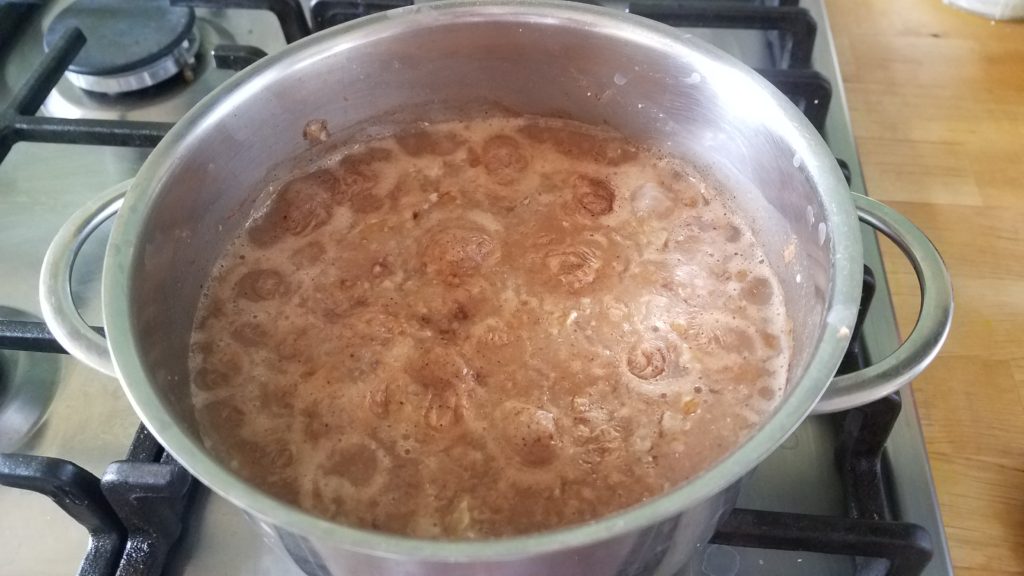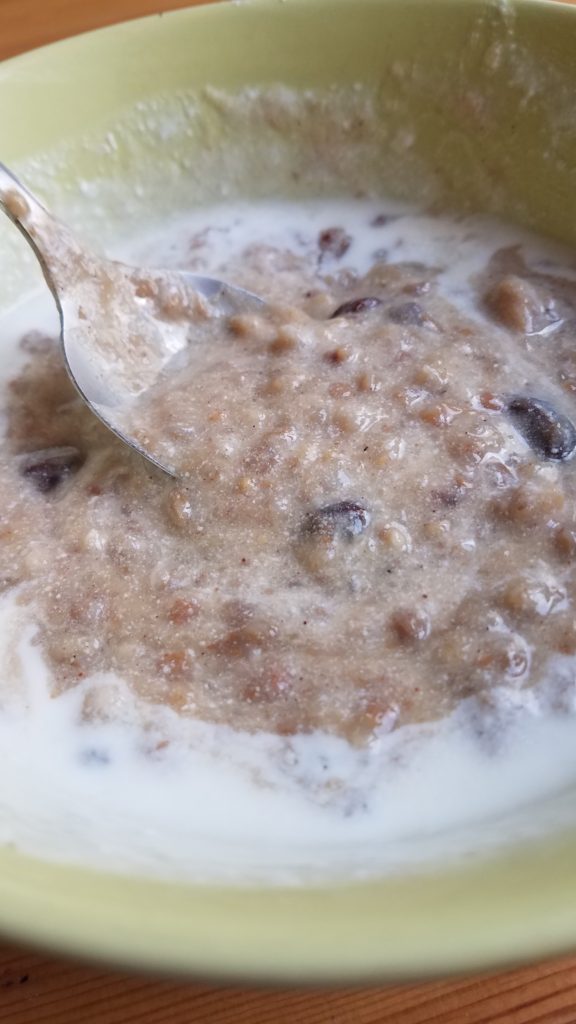Masala Porridge


The most difficult thing about writing a recipe is translating the creative chaos of real life into exact measurements. When we cook, we know to put enough flour in the dough to achieve the consistency we seek. But to convey this information to others, we have to measure and measure again, and not forget about that extra pinch that caused the ball to come together. And then we have to come up with a style in which to write the recipe, something appealing, whimsical. We have to adopt a personality that makes the reader think, I want to be like her. When I repeat her quaint anecdote about tandoor ovens to my friends, they will think I’m exciting and world-traveled and sophisticated, just like she pretends to be. And then we have to make sure the recipe fits our brand. I am known for loving of dumplings since the beginning of time, my nine months of research into dumpling mysteries on the Silk Road, how dumplings impart feelings of home and comfort and belonging and authentic womanhood to me. That’s my brand.
All this is very tiresome if you just want to tell others about a way you combine ingredients to make something delicious. Which is what I’m going to do here:

You take a smallish pot and you pour enough toasted buckwheat groats in it to cover the bottom. Then you take one cardamom pod and crush it against the counter under the meaty part of your hand and toss all the scattered bits into the pot. You sprinkle in as much cinnamon and nutmeg as you like. If you have fresh ginger, you slice three or four or more slivers and throw them in. You add a handful of raisins and a turn or two of black pepper from your grinder. If you like, you may include a half handful of crushed walnuts. Curcuma is also welcome, either in root or (turmeric) powder form. Then you pour in enough oats to block everything from view. You cover everything with water to at least a finger above the top of the heap of ingredients. You turn the stove on low. It takes about 15 minutes for the buckwheat to cook. Stir at least once to make sure the porridge hasn’t burned while you were distracted writing up this recipe.
I like to eat this porridge with homemade kefir that smells so pungently my daughter makes faces at the jar it lives in. Yogurt would also do. As sweeteners, I use either honey or apple sauce. For a genuine masala touch, try mango chutney or settle for some nice fruit preserves.

Savor as you stare out the window into your courtyard, grateful for all your blessings and still wondering if the lockdown will ever end and if you’ll ever see another view or adult while eating breakfast.
Makes enough for two or three mornings, if you add more of your favorite ingredients and reheat with water on subsequent days.
One Response to Masala Porridge
Leave a Reply Cancel reply
Shopping Cart

Your shopping cart is empty
Visit the shop
















This looks amazing, taking so many ingredients I love — and respect! — and putting them together in a breakfast I could live with often. Thank you for it!